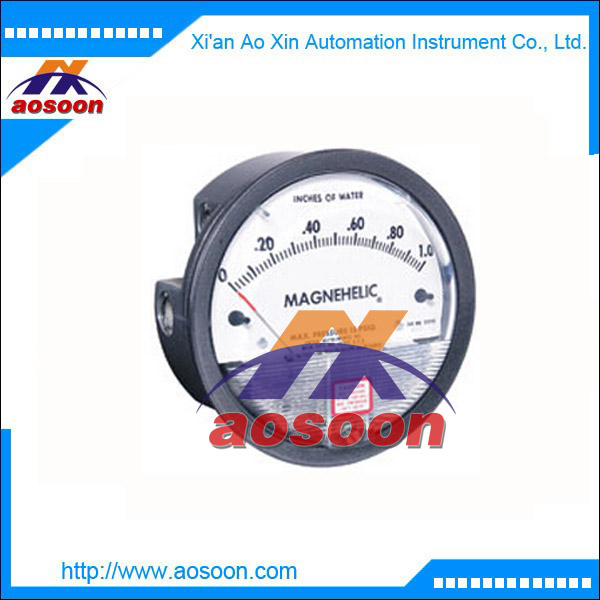DWYER MAGNEHELIC DIFFERENTIAL PRESSURE GAGES Dwyer 2000-00 0-0.25" IN WC INCHES OF WATER
DWYER MAGNEHELIC DIFFERENTIAL PRESSURE GAGES Dwyer 2000-00 0-0.25" IN WC INCHES OF WATER
Bezel provides flange for flush mounting in panel.
Clear plastic face is highly resistant to breakage. Provides undistorted viewing of pointer and scale.
Precision litho-printed scale is accurate and easy to read.
Calibrated range spring is flat spring steel. Small amplitude of motion assures consistency and long life. It reacts to pressure on diaphragm. Live length adjustable for calibration.
Red tipped pointer of heat treated aluminum tubing is easy to see. It is rigidly mounted on the helix shaft.
Pointer stops of molded rubber prevent pointer over-travel without damage.
“Wishbone” assembly provides mounting for helix, helix bearings and pointer shaft.
Jeweled bearings are shock-resistant mounted; provide virtually friction-free motion for helix. Motion damped with high viscosity silicone fluid.
Helix is precision made from an alloy of high magnetic permeability. Mounted in jeweled bearings, it turns freely, following the magnetic field to move the pointer across the scale.
Zero adjustment screw is conveniently located in the plastic cover, and is accessible without removing cover. O-ring seal provides pressure tightness.
O-ring seal for cover assures pressure integrity of case.
OVERPRESSURE PROTECTION
Blowout plug is comprised of a rubber plug on the rear which functions as a relief valve by unseating and venting the gage interior when over pressure reaches approximately 25 psig (1.7 bar). To provide a free path for pressure relief, there are four spacer pads which maintain 0.023˝ clearance when gage is surface mounted. Do not obstruct the gap created by these pads. The blowout plug is not used on models above 180˝ of water pressure, medium or high pressure models, or on gages which require an elastomer other than silicone for the diaphragm. The blowout plug should not be used as a system overpressure control. High supply pressures may still cause the gage to fail due to over pressurization, resulting in property damage or serious injury. Good engineering practices should be utilized to prevent your system from exceeding the ratings of any component.



 English
English 中文
中文

.jpg)
![]() TEL:+86-029-86691808
TEL:+86-029-86691808![]() Email:xaaxyb@126.com
Email:wsb2828@126.com
Email:xaaxyb@126.com
Email:wsb2828@126.com xaqksm
xaqksm